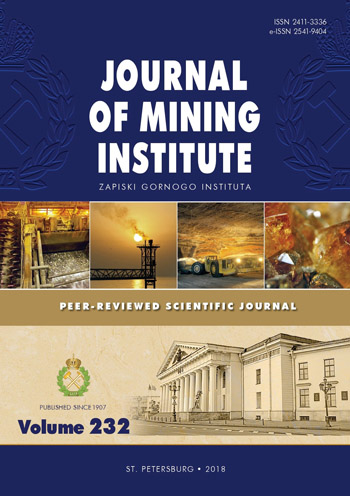Thermal processes research development in machine-building technology
- 1 — Ph.D., Dr.Sci. professor Rybinsk State Aviation Technological University named after P.A.Soloviev
- 2 — Institute for Sustainable Technologies – National Research Institute
Abstract
The technique for determining the temperature in the surface layer of the workpiece with a blade tool is considered, taking into account the volume heat source in the cutting zone, on the basis of which it is proposed to calculate the processing errors caused by the thermal action on the cutting tool and the workpiece being machined. When determining the thermal impact on the cutting edge of the tool, heat flows acting on the front and back surfaces are taken into account. When determining the thermal effect on the workpiece, the heat fluxes acting on deformation of the material when removing the chips and the back surface of the cutting tool are taken into account. The temperature in the cutting zone is determined by the summation of the temperature in the surface layer resulting from the plastic deformations of the material in the cutting zone, the friction of the chips against the front surface of the cutting tool and the friction of the back surface of the cutting tool against the treated surface. The peculiarity of the proposed method is that the physical and mechanical properties of the processed and tool materials (thermal diffusivity, ultimate thermal conductivity, specific volume heat capacity), processing regimes (cutting speed, feed and cutting depth), dimensions of the workpiece and cutting tool, geometry of the cutting tool (front and rear corners, radius at the top of the cutter in the plan, radius of rounding of the cutting tool, main and auxiliary corners in the plan). The calculations take into account the change in the intensity of volumetric heat fluxes in the cutting zone along their height.
References
- Bezyazychnyi V.F. Similarity method in engineering technology. Moscow: Mashinostroenie. 2012, p. 320 (in Russian).
- Krasnyy V.A., Maksarov V.V. Tribotechnical characteristics of details of mining machines with a regular microgeometric surface. Metalloobrabotka. 2016. N 1(91), p. 29-35 (in Russian).
- Maksarov V.V., Leonidov P.V. Modeling and management of dynamic properties of technological systems. Zapiski Gornogo instituta. 2014. Vol. 209, p. 71-77 (in Russian).
- Poletika M.F. The theory of cutting. Part 1. The mechanics of the cutting process. Tomsk: Izd-vo Tomskogo politekhnicheskogo uni-versiteta. 2001, p. 202 (in Russian).
- Reznikov A.N. Thermophysics of processes of mechanical processing of materials. Moscow: Mashinostroenie, 1981, p. 279.
- Silin S.S. Similarity method for cutting materials. Moscow: Mashinostroenie, 1979, p. 152 (in Russian).
- Talantov N.V. The physical basis of the process of cutting, wear and tear of the tool. Moscow: Mashinostroenie, 1992, p. 240 (in Russian).
- Boothroyd G. Temperatures in Orthogonal Metal Cutting. Proc. Jnst. Mech. Eng. 1963. Vol. 177, p. 789-810.
- Maksarov V.V., Olt Ju.Ju., Madissoo M.M. Increasing the Effectiveness of the Cutting Process in the Course of Milling. Journal of Mechanics & Industry Research. 2013. Vol. 4. N 1, p. 75-81.
- Maksarov V.V., Krasnyy V.A. Increase of wear resistance of friction down hole oil pumps with seals of directionally reinforced polymer composizioni materials. Chemical and Petroleum Engineering. 2017. Vol. 1, p. 34-37.
- Olt Ju.Ju., Liivapuu O.O., Maksarov V.V., Liyvapuu A.A., Tärgla T.T. Mathematical Modelling of Cutting Process System. Engineering, Mathematics I. Springer. Proceedings in Mathematics & Statistics. 2016. Vol. 178, p. 173-186
